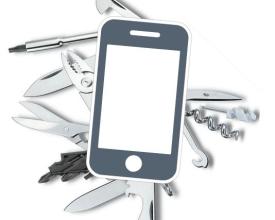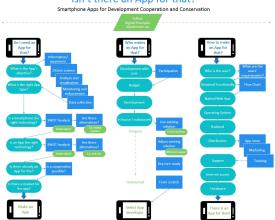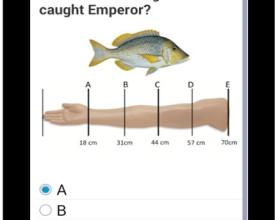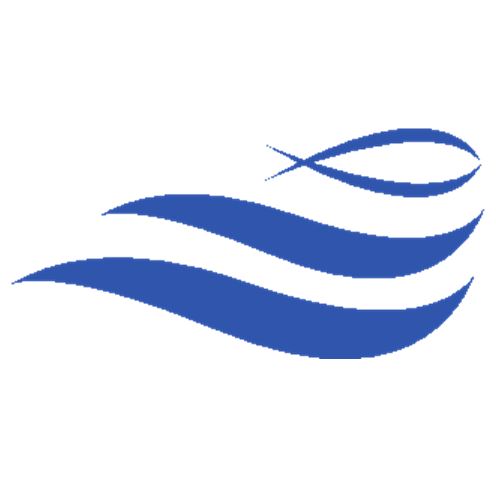
Isn’t there an App for that? Smartphone Apps in marine resource management
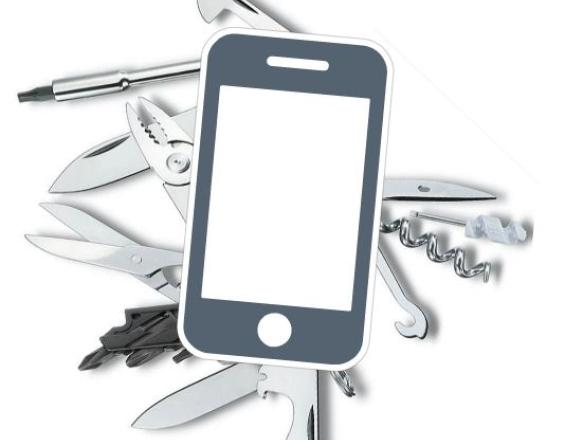
Managing marine resources heavily relies on data, but in many contexts, including Pacific Island countries, data deficiency in fisheries and other marine resources prevents informed management decisions.
Find here the full documentation of smartphone app use and development for (marine) resource management: • The spectrum of Smartphone Apps in natural resource management • A guide for App Development • Open Data Kit for data driven marine management in Fiji as example
Context
Challenges addressed
- Managing marine resources heavily relies on data, but in many contexts data deficiency remains, preventing informed management decisions.
- Manual, paper based reporting system are widely used, even though these are typically burdensome, resource intensive, error-prone and slow.
- Data often remains locked away in spreadsheets and results are not measurable, visible, accessible or transparent.
- As response smartphone apps are widespread and potentially powerful tools.
- However, apps are perceived as a “knight in shining armor” - a new solution to an old problem. Digitizing a solution often merely digitizes the problem, and doesn’t necessarily solve it.
- Instead of just going with the fashion, the problem and objective of the proposed (app-) solution should be well defined, followed by a careful SWOT analysis and consideration of possible alternatives.
- Specific benefits of apps could be, e.g. wide geographical reach, more efficient data collection, or making use of smartphone sensors.
Location
Process
Summary of the process
After exploring the full spectrum of Smartphone Apps in natural resource management, a guide for App Development provides a decision tree guiding the process. The use of Open Data Kit gives one app example for data driven marine management in Fiji, including a detailed documentation how to use Open Data Kit through KoBoToolkit. Beyond this, MACBIO aims at collaborating with national and regional stakeholders to develop lasting solutions and standards for the use of open-source mobile applications in support of sustainable marine resource management and conservation.
Building Blocks
The spectrum of Smartphone Apps in (marine) resource management
There is a wide spectrum of Smartphone Apps in (marine) resource management. This Block gives orientation in the app jungle, starting with definitions and background on smartphone and app usage, and the opportunities this provides e.g. for natural resource management.
Also, there is no need to reinvent the wheel, if the answer to “Isn’t there an app for this” is yes. A list provides an overview of different app types and examples from marine management and other sectors, with a special focus on the Pacific region.
Enabling factors
Mobile technology is on the rise and more and more people have access to these technologies, as the computing power of smartphones increases, their price drops, mobile phone coverage and access to the internet becomes more widespread and digital literacy is increasing - in industrialized world, as well as in developing and emerging economies.
Apps are bedoming more and more popular and can be powerful tools, if the addressed problem and objective of the proposed (app-) solution is well defined.
Lesson learned
While there are many enabeling factores that can turn apps into powerful tools, often however, novelty and technical feasibility can be deceiving. Digitizing a solution often merely digitizes the problem. Instead of just going with the fashion, the problem and objective of the proposed (app-) solution should be well defined, followed by a careful SWOT analysis and consideration of possible alternatives.
Specific benefits of apps could be, e.g. wide geographical reach, while a threat could be the lack of acceptance by certain audiences, depending e.g. on their cultural background and digital literacy.
Thus app development and use must be seen as strategic process. For such a strategic approach of app development, use and monitoring, it is crucial to identify the right type of app addressing the identified audience and objective, be it “citizen science”, “crowdsourcing”, engagement, education or individual data collection.
A guide for App Development
App development and use is a strategic process. This guide aims to assist in this process, follwing the Digital Principles.
First objectives and types of apps are analysed, before looking at strenghts and weaknesses, as well as alternatives to smartphones and apps as technology. A guide on researching the existing app market concludes this chapter.
Secondly the enabling environment of app development is considered, from user centred development, over budget considerations and development options.
Lastly, technical aspects of app development are explored, dwelling on user needs, functionality, platforms, back and frontend, distribution and hardware considerations.
Enabling factors
Successful development depends on enabling factors, following a strategic process that helps to ensure that the app solution
- is tailored to user's needs
- uses the right type of technology to address the identified objective
- doesn't reinvent the wheel, if other suitable solutions already exist
- is within the budget
- is developed, using resources effectively
- has the required functionality
- uses the most suitable platform
- combines backend end frontend
- is distributed well
- considers hardware and connectivity
Lesson learned
The below decision tree can help to understand whether and how an app may be a useful solution to a given problem statement, following these guiding questions:
- "Do I need an App for that?",
- "Who makes an App for that?" and
- "How to make an App for this?"
This structure is based on our experience and aims to avoid app solutions that do not properly consider objective, user need, available resources and technical requirements.
Resources
Open Data Kit for data driven marine management in Fiji
The MACBIO project assists its partners in developing effective approaches to marine management. In 2015 the project was requested to support the design and development of open-source mobile solutions for data collection in locally managed marine areas in Fiji, among others. Thorough research and testing of existing platforms and proven examples identified Open Data Kit (ODK), as a suitable open source solution, especially in combination with KoBoToolkit.
Enabling factors
In general, app development was carried out in an iterative, responsive way. This approach proved to be very efficient and effective, and led to an increasingly improved app. It is important to note that training, tests and iterative improvement with all relevant stakeholders should not be underestimated, before successfully using an app in the field. Keeping the approach in house had clear advantages for responsiveness.
Lesson learned
Strategic approach: Objective and the added value of an app
- Don’t reinvent the wheel: Initial market research, discussions with stakeholders and the study of lessons learned
- Proof of concept phase is important: Low cost building block systems
- Devil is in the detail: User contexts, internet and electricity availability , costs and modalities of data plans etc
- In house, iterative approach with quick feedback loops
- Development step by step with users
- Open source, compatible and scalable approaches, to avoid duplication of development effort, dependencies & lock in effects
- Data sensitivity issues are important, also for building trust
Impacts
- Full documentation of conceptualizing, development and implementation of smartphone apps for (marine) resource management made available
- Fiji Locally Managed Marine Area (FLMMA) network representatives trained in use of collaboratively developed smartphone surveys for data collection in the network’s 400 communities
- Additional Fijian stakeholders from marine resource management trained in use of collaboratively developed smartphone surveys for data collection
- Marine spatial planning stakeholders from various government ministries in Kiribati trained in use of collaboratively developed smartphone surveys for data collection
- Several hundred natural resource management and development cooperation experts trained in smartphone app conceptualizing, development and implementation through Massive Open Online Course (MOOC) on Digital Development
Beneficiaries
Large numbers of people, dependent on marine resources, benefit from a better management thereof. Government ministries, Organizations and networks gain from more efficient and effective management approaches, such as FLMMA network (s.b.)
Sustainable Development Goals
Story

Isn’t there an App for that? There probably is! Mobile technology is on the rise and more and more people have access to these technologies as well as the internet. In 2016 there are about 2 Billion Smartphone users out of the 4.6 mobile phone users worldwide, with close to 3 Billion expected in 2020. And today 68% of these smartphone owners use apps. Already in 2013 there have been 56 Billion apps downloaded to Smartphones.
This is not a phenomenon of the industrialized world. While internet and smartphone usage is more widespread here, developing and emerging economies are catching up with 54% average internet use and 37% average smartphone ownership. Our world is increasingly digitally connected.
This changes the way we communicate, work and live, and brings about fundamental social change. The combination of computational power, sensors, and wide-scale user uptake means that the internet, smartphones and in particular apps provide an unprecedented opportunity: Opportunities for development, prosperity, quality of life and sustainability worldwide, be it access to information, education, health and safety or data collection, management and participation in political processes – even in the remotest areas.
Therefore, Smartphone Apps areone crucial aspect of Information and Communication Technology (ICT) and are increasingly used to achieve sustainability, development and conservation. An automated search of the Google Play Store in 2015 indicates how popular smartphone apps for sustainability have really become:, out of 36 304 apps, ~6300 were nature-themed. Despite the large number of apps available, very little information is available to evaluate the meta level of effectiveness of apps as well as practical guidance on how these apps are developed and used.
To close this gap, we try to offer orientation in the jungle of apps, their development and application and to exemplify successful app use in natural resource management.
In this context Open Data Kit will be introduced and explained, as well as its use for data driven marine management in Fiji.

